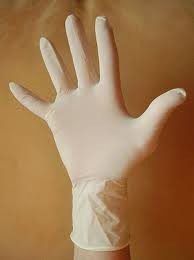Inservice Training
Handwashing And Glove Use
Handwashing is the most important part of personal hygiene every day our hand’s touch surfaces covered with pathogens that we cannot see Even healthy people can spread pathogens Many food handlers fail to wash their hands correctly and as often as needed Train your staff who food handle to wash their hand and monitor their actions.
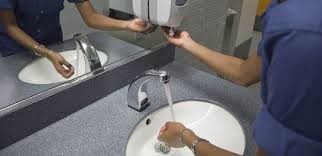
Where to Wash Hands:
Hands need to be washed in a sink designated for hand washing
Do not wash hands in sinks for food prep, dishwashing or utility services
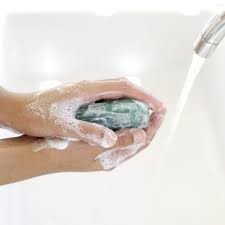
How to Wash Hands:
The whole process takes about 20 seconds
1. Wet hands and arms. Use running water as hot as you can comfortably stand. It should be at least 100 Degrees F.
2. Apply soap. Apply enough to build up a good lather.
3. Scrub hands and arms vigorously. Scrub them for 10 to 15 seconds. Clean under fingernails and between fingers
4. Rinse hands and arms thoroughly. Use running warm water
5. Dry hands and arms. Use a single use paper towel or a hand dryer. Use a paper towel to turn off the faucet and to open the door when leaving the restroom
When to wash hands:
Staff who handle food must wash their hands before they start work and doing any of the following tasks:
- Using the restroom, food handlers carrying pathogens such as Norovirus can transfer them to food if they do not wash their hands after using the restroom
- Handling raw meat, poultry and seafood (before and after)
- Touching hair, face or body
- Sneezing coughing or using a tissue
- Eating, drinking, smoking or chewing gum or tobacco
- Handling chemicals that might affect food safety
- Taking out garbage
- Clearing tables or busing dirty dishes
- Touching clothes or aprons
- Handling money
- Leaving and returning to the kitchen/prep are
- Handling service animals or aquatic animals
- Touching anything else that may contaminate hands, such as dirty equipment, work surfaces, or wiping clothes.
Hand Antiseptics
Are liquids or gels that help lower the number of pathogens on the skin if used they must comply with the Code of Federal Regulations (CFR) and Food and Drug Administration standards hand antiseptic must only be used after hand washing and not in place of one antiseptic applies, food handlers should not touch food or equipment until the substance has dried

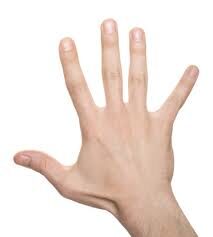
Hand Care Guidelines:
Fingernail Length
Keep fingernails short and clean. Long fingernails may be hard to keep clean and can rip gloves. They can also chip and become physical contaminants. Fingernails should be trimmed and filed. This will allow nails to be cleaned easily. Ragged nails can be hard to keep clean. They may also hold pathogens and break off becoming physical contaminants
False fingernails:
Do not wear false fingernails. They can be hard to keep clean. They can break off into food
Nail polish:
Do not wear nail polish. It can disguise dirt under nails. It may also flake off into food. If staff is wearing nail polish single-use gloves must be worn

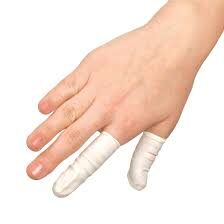
Infected wounds or cuts:
Infected wounds, cuts or boils contain pus. They must be covered to prevent pathogens from contaminating food and food contact surfaces. How a wound is covered depends on where it is located
- Cover wounds on the hands or wrists with an impermeable cover “impermeable” means water can not pass through the cover. Examples: bandages and finger cots-protective coverings. Next place a single use glove over the cover.
- Cover wounds on the arms with an impermeable cover, such as a bandage. The wound must be completely covered
- Cover wounds on the other parts of the body with a dry, durable tight fitting bandage.
Bare Hand Contact With Ready To Eat Food
Food can become contaminated when it has been handled with bare hands. This is especially true when hands have not been washed correctly or have infected cuts or wounds. Do not handle ready-to-eat foods with bare hands. This is especially important if you primarily serve a high-risk population

Single Use Gloves:
Single-use gloves can help keep food safe by creating a barrier between hands and food. They should be used when handling ready-to-eat food. Ready to food is any food that will not be cooked further. Gloves do not need to be worn when washing produce. They also do not need to be worn when handling ready to eat ingredients for a dish that will be cooked to the correct internal temperature such as pizza

Gloves Can Never Be Used In Place Of Hand Washing. Hands Must Be Washed Before Putting On Gloves And When Changing To A New Pair
Buying Gloves:
Approved gloves: Purchase only gloves approved for food service. This includes gloves bearing the NSF Mark.
Disposable gloves: Buy only single-use gloves for handling food. Do not wash and reuse them.
Different types: Supply different gloves for different tasks. Long gloves, for example, should be used for hand mixing salads. Colored gloves can also be used to help prevent cross-contamination.
Multiple sizes: Provide gloves of varying sizes. Gloves that are too big will not stay on. Those that are too small will tear and rip easily. Latex alternatives: Some food handlers and customers may be sensitive to latex. Consider providing gloves made from other materials.
How To Use Gloves:
If you are not careful when using gloves, the food you handle can become unsafe:
- Wash and dry your hands before putting on gloves
- Choose the correct glove size
- Hold gloves by the edge when putting them on.
- Avoid touching the glove as much as possible
- One you have put them on, check the gloves for rips and tears
- Do not blow into gloves
- Do not roll gloves to make them easier to put on
When to Change Gloves:
- As soon as the gloves become dirty or torn
- Before beginning a different task
- After an interruptions, such as taking a phone cal
- After handling raw meat, seafood, or poultry and before handling ready to eat food
Gloves can give food handlers a false sense of security, especially if they are not changed as often as they should be.
PLEASE SIGN AND DATE: (may use reverse)
